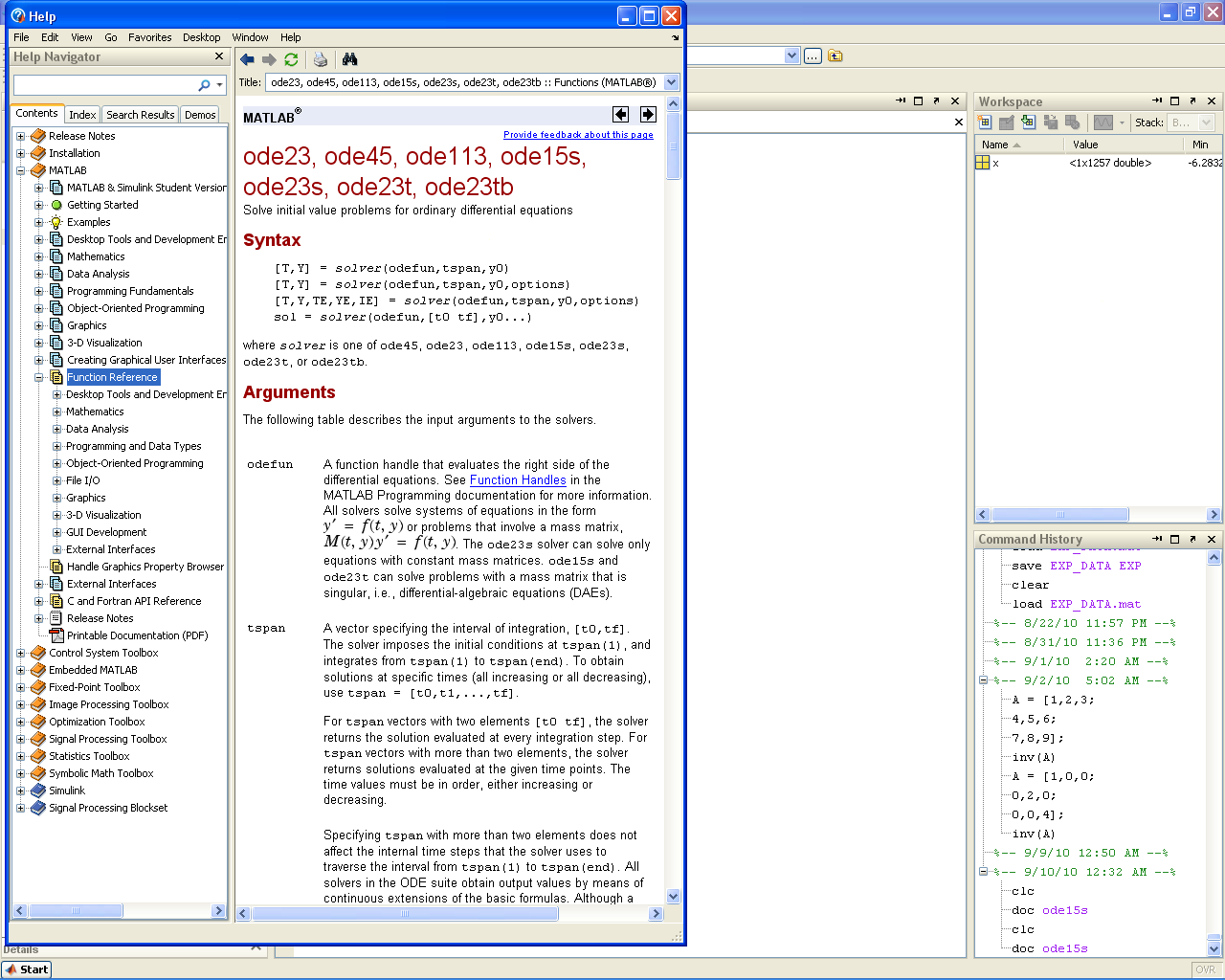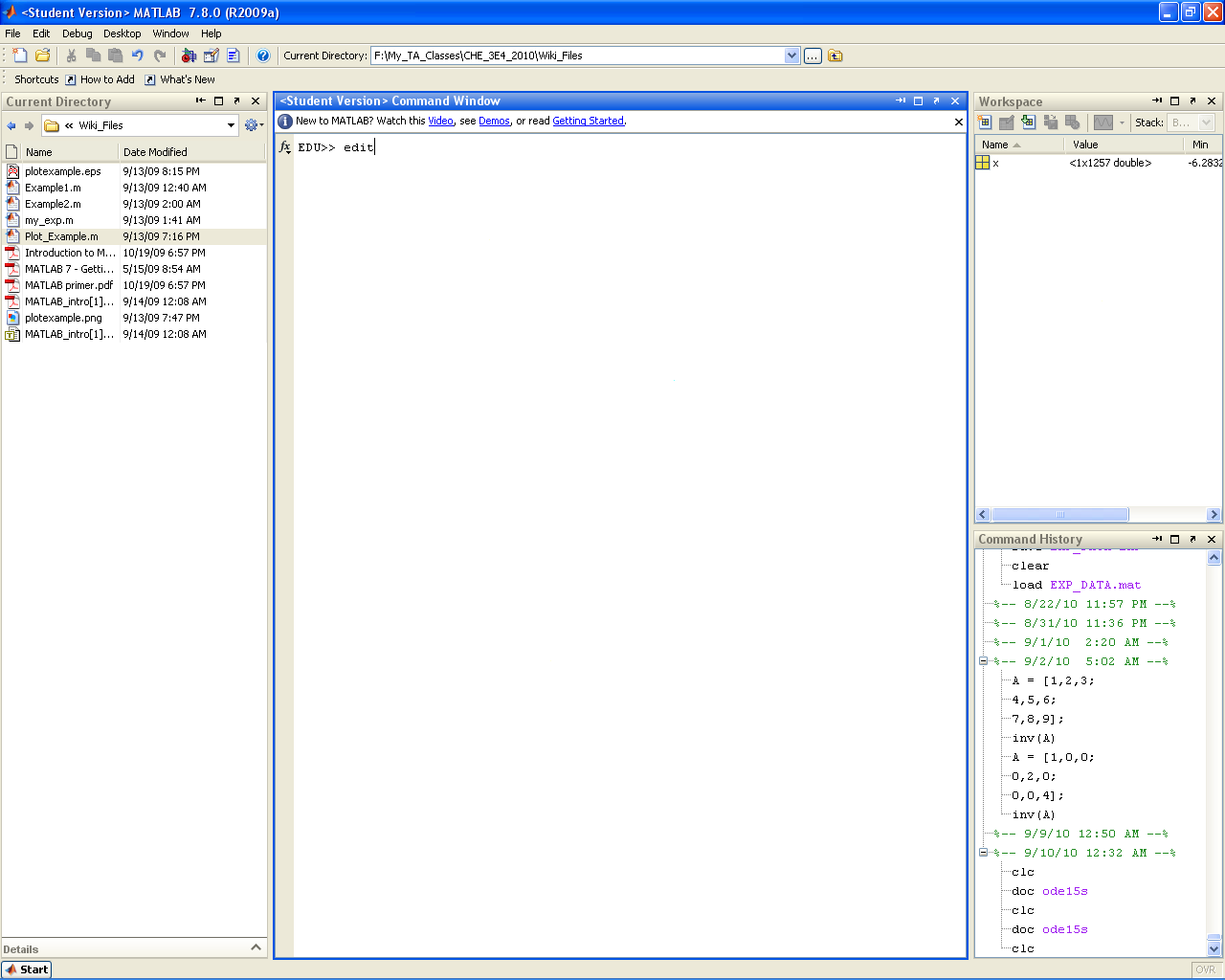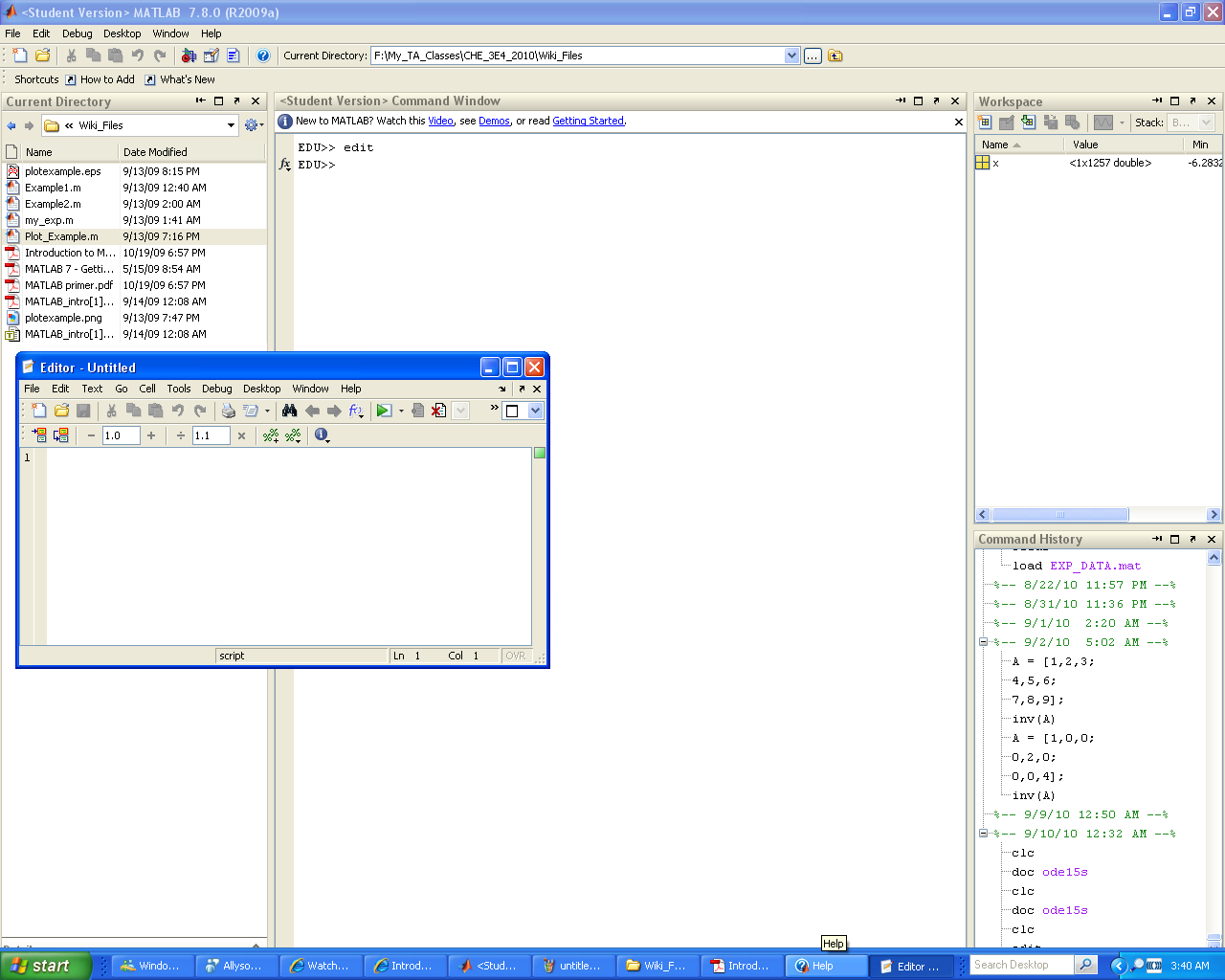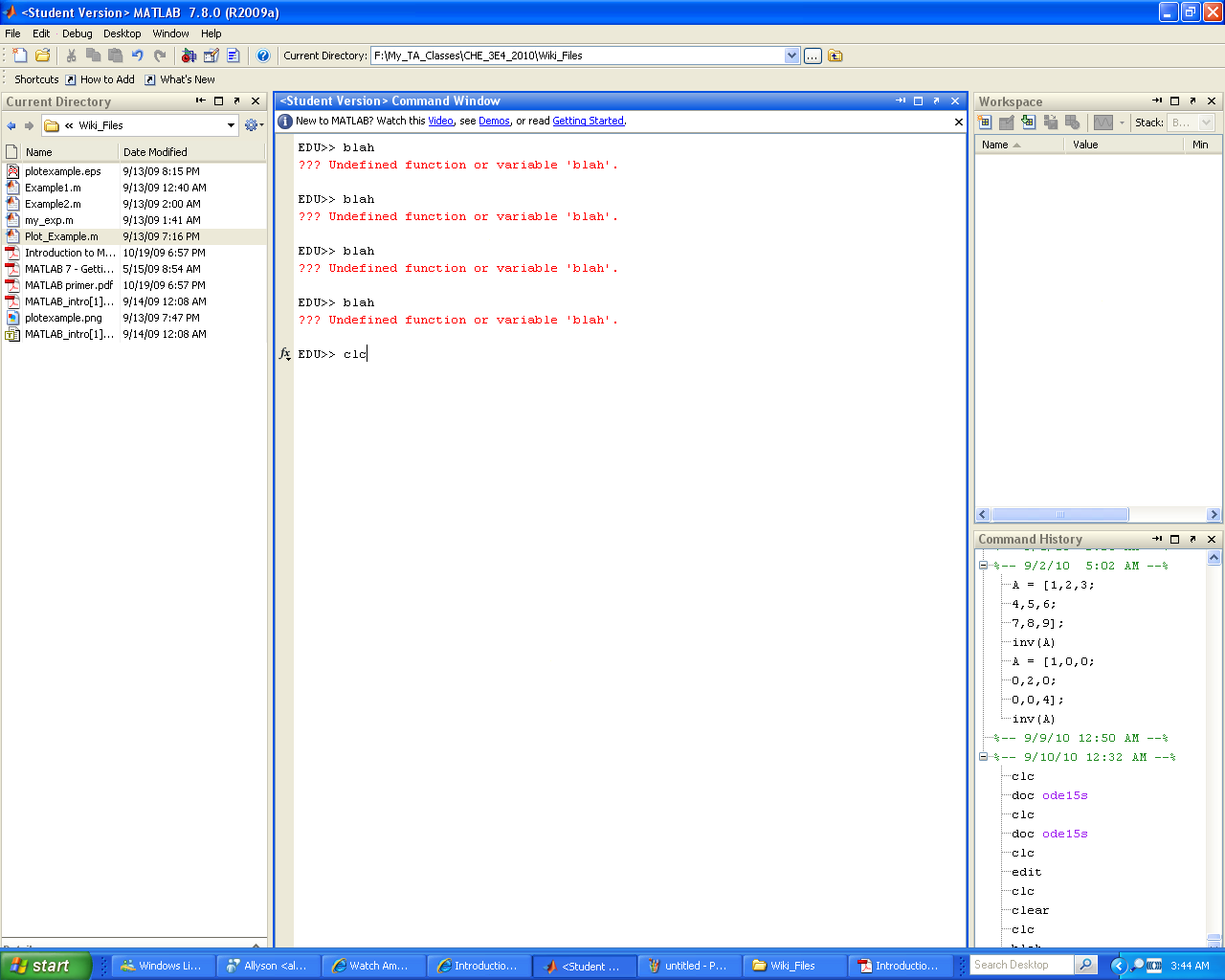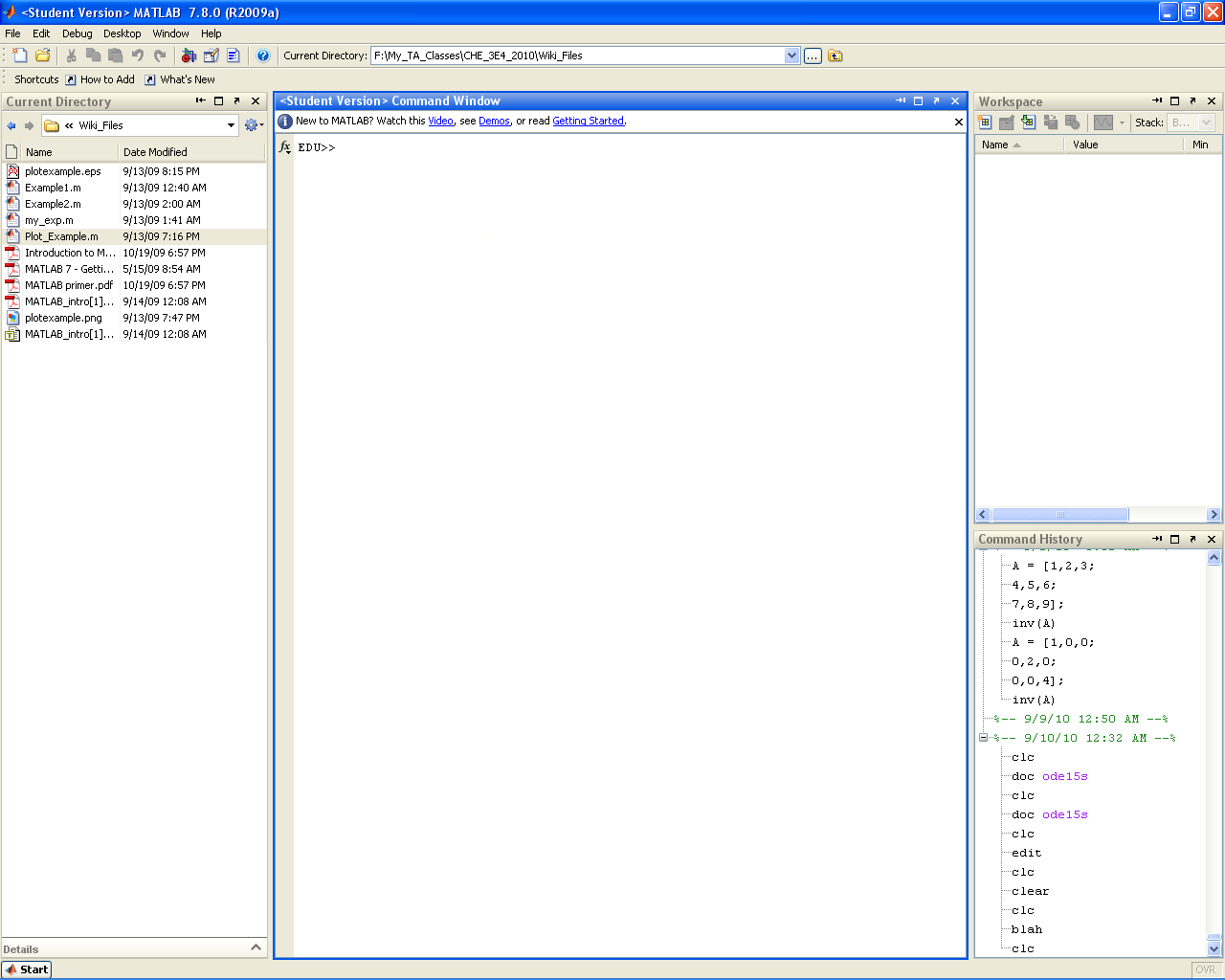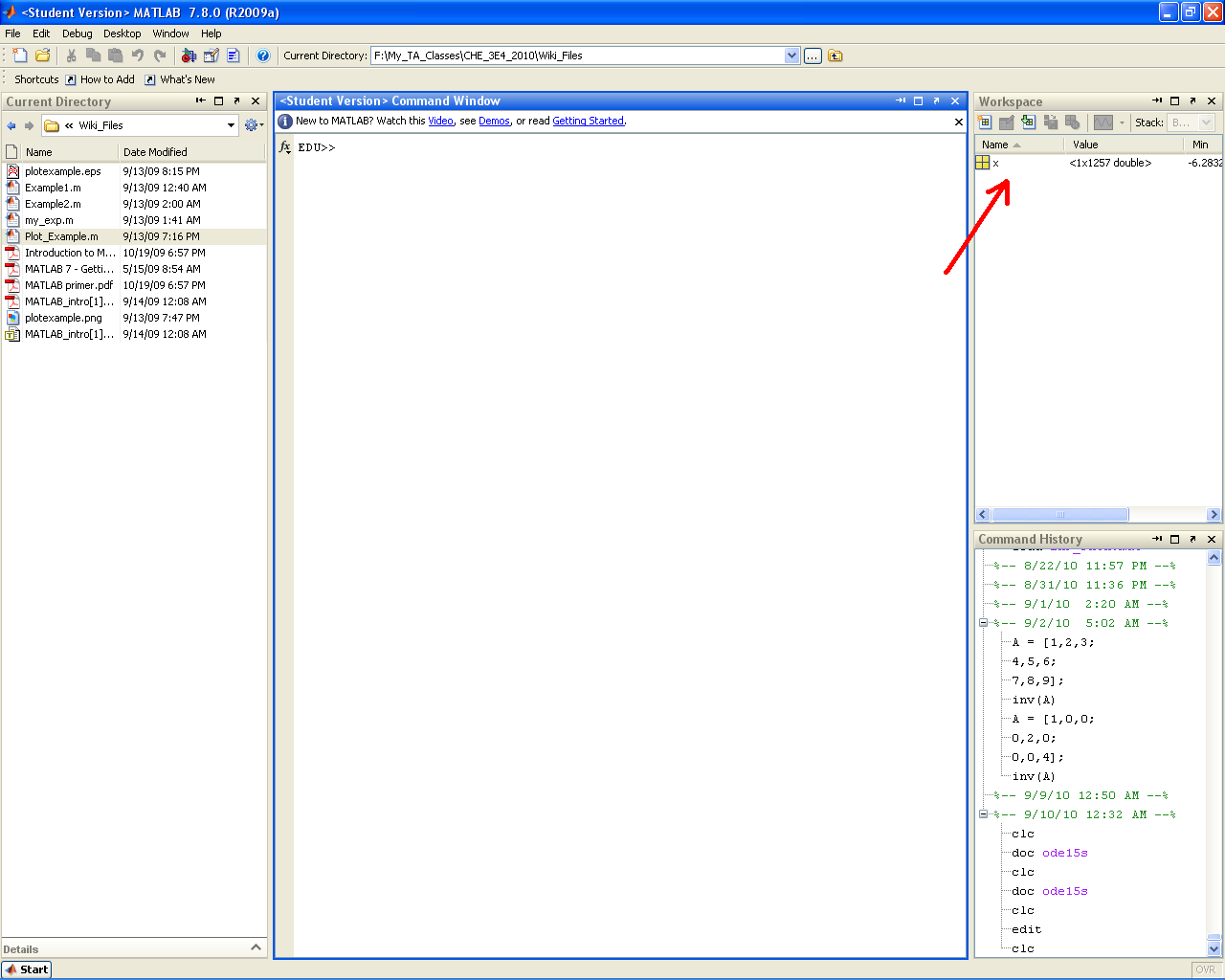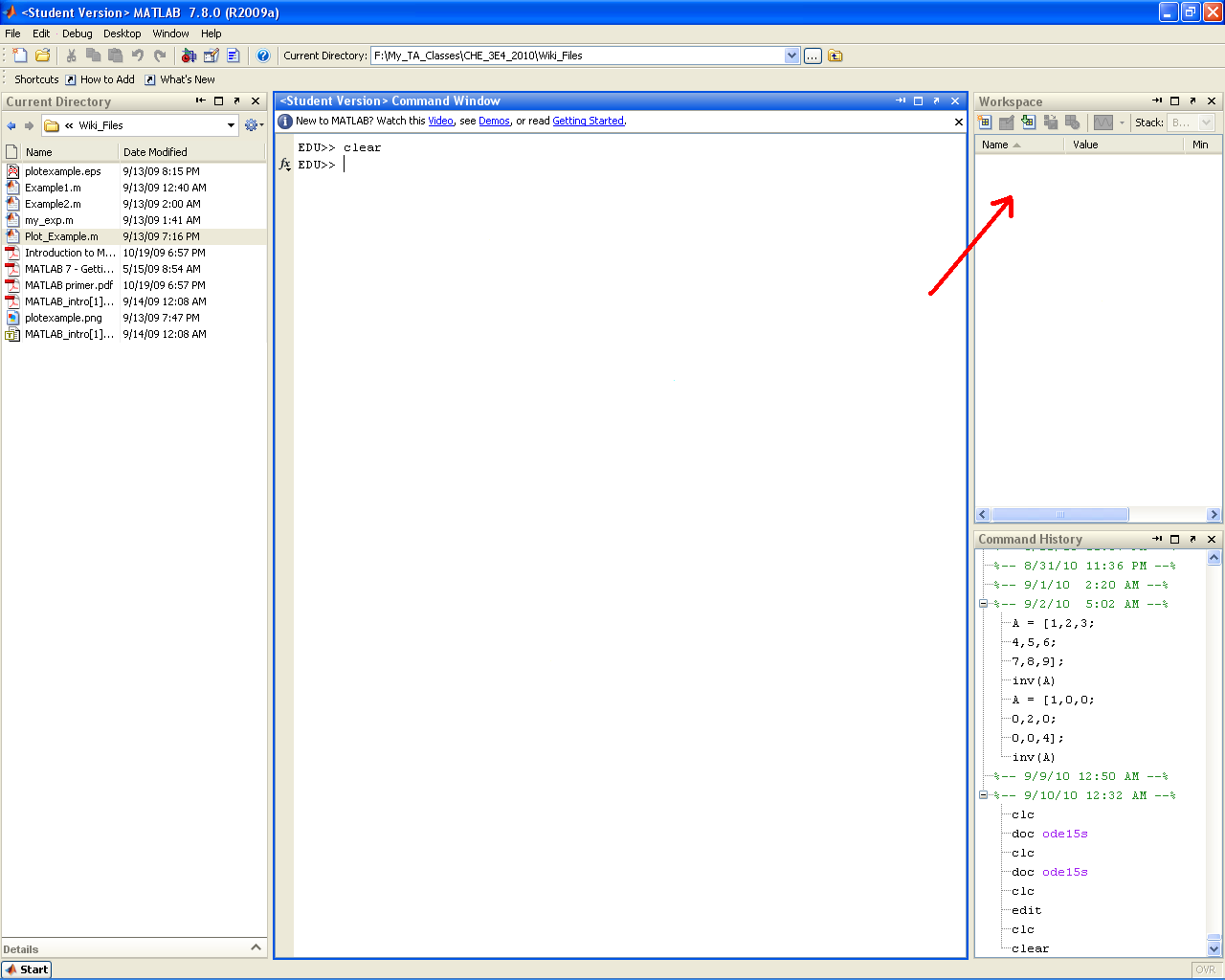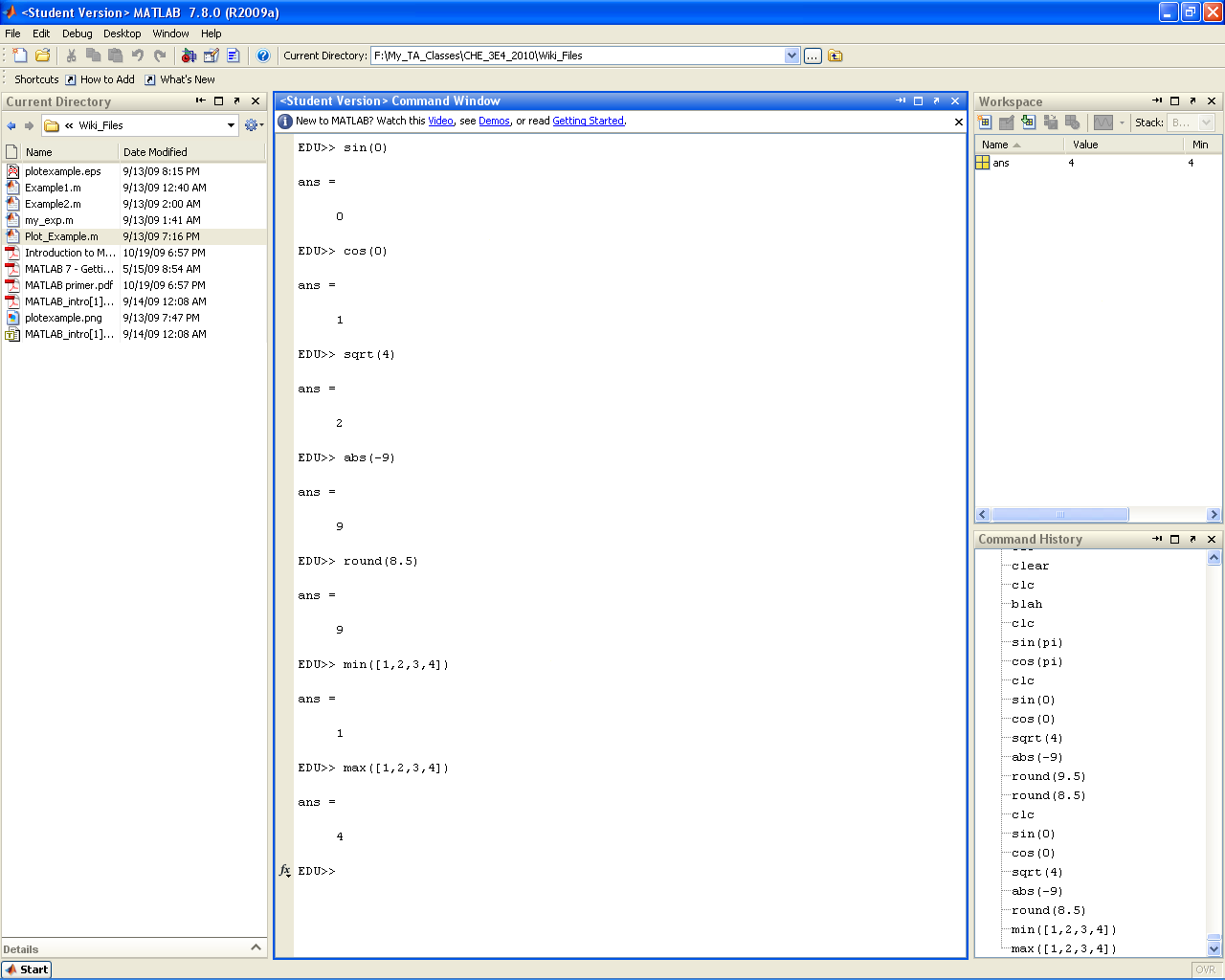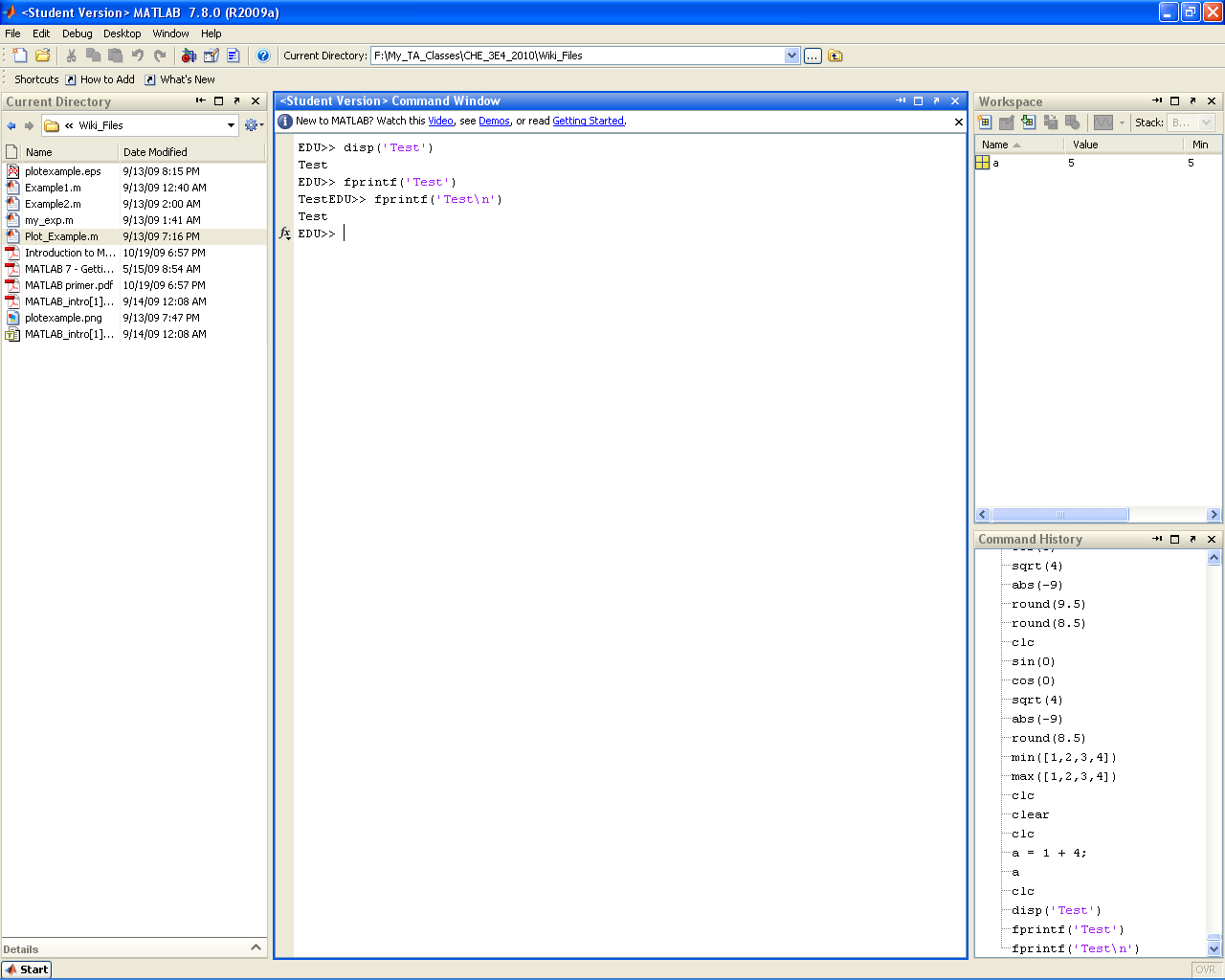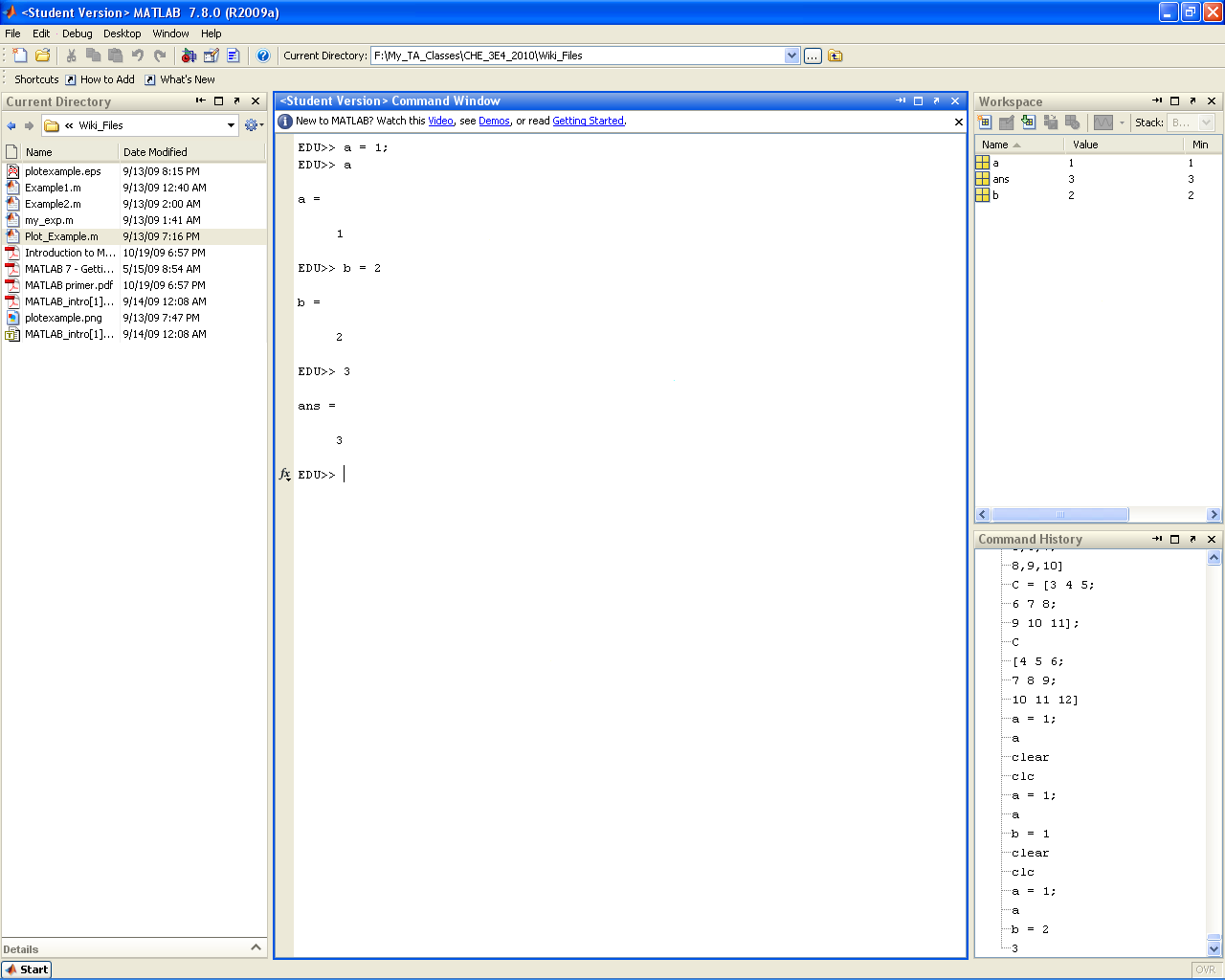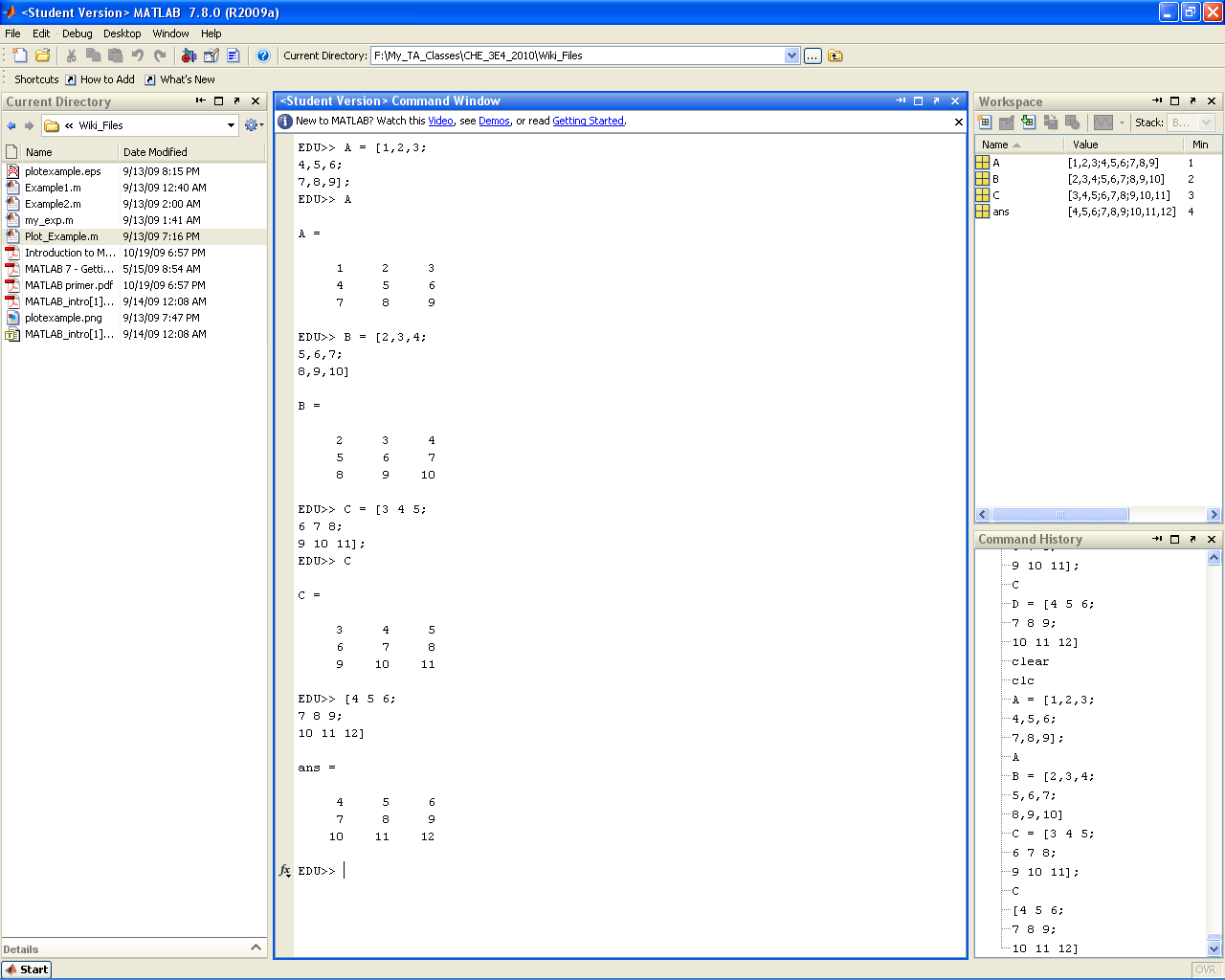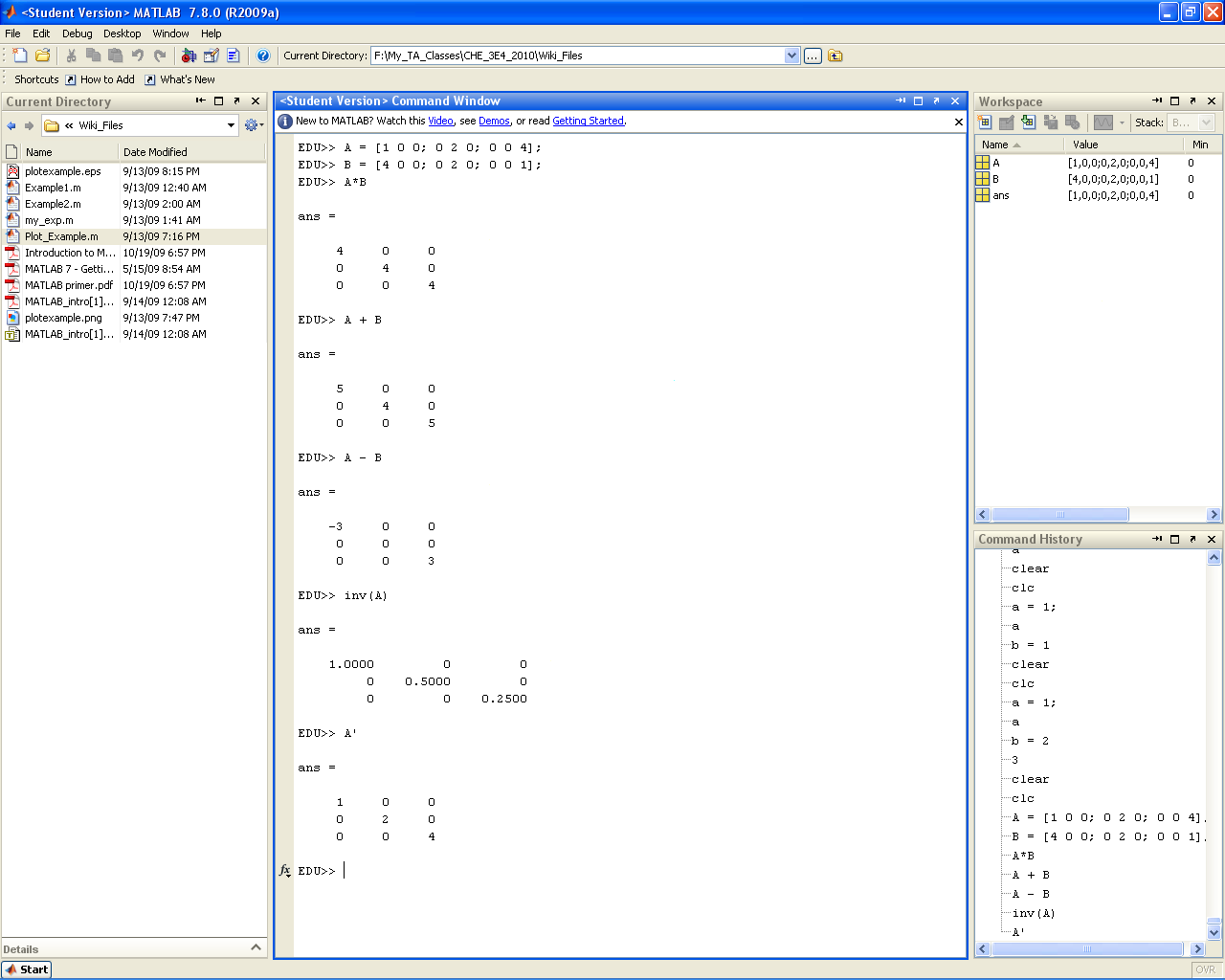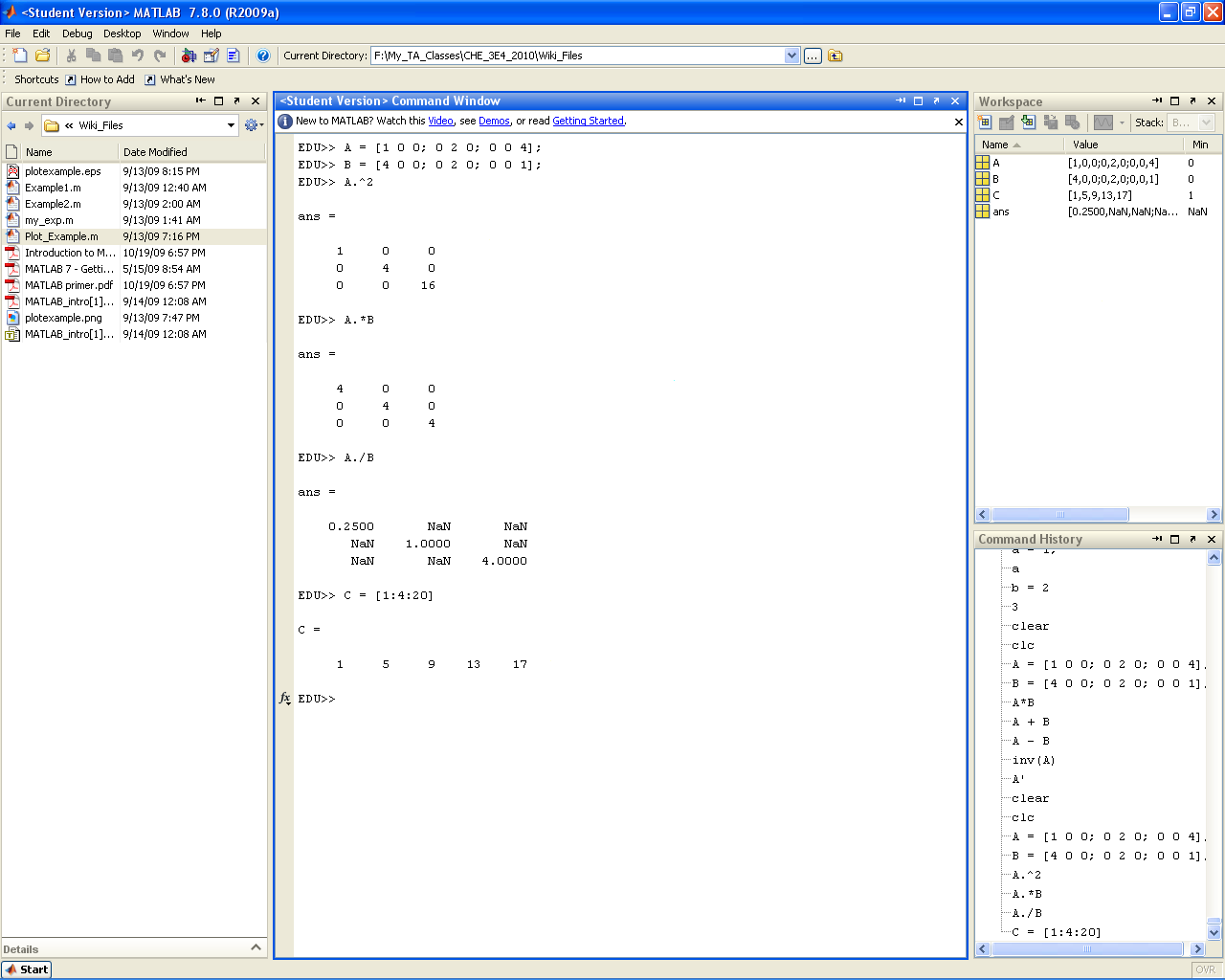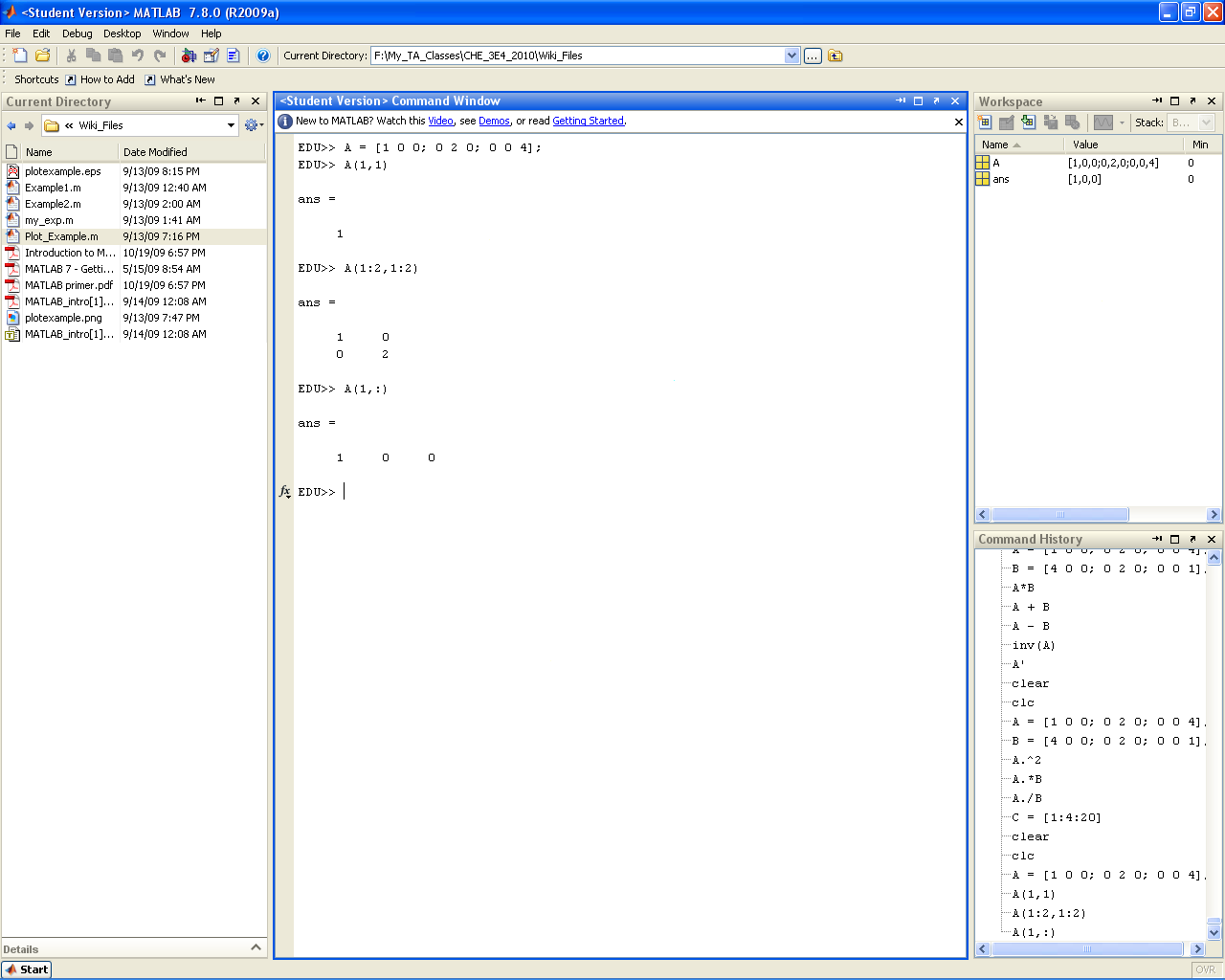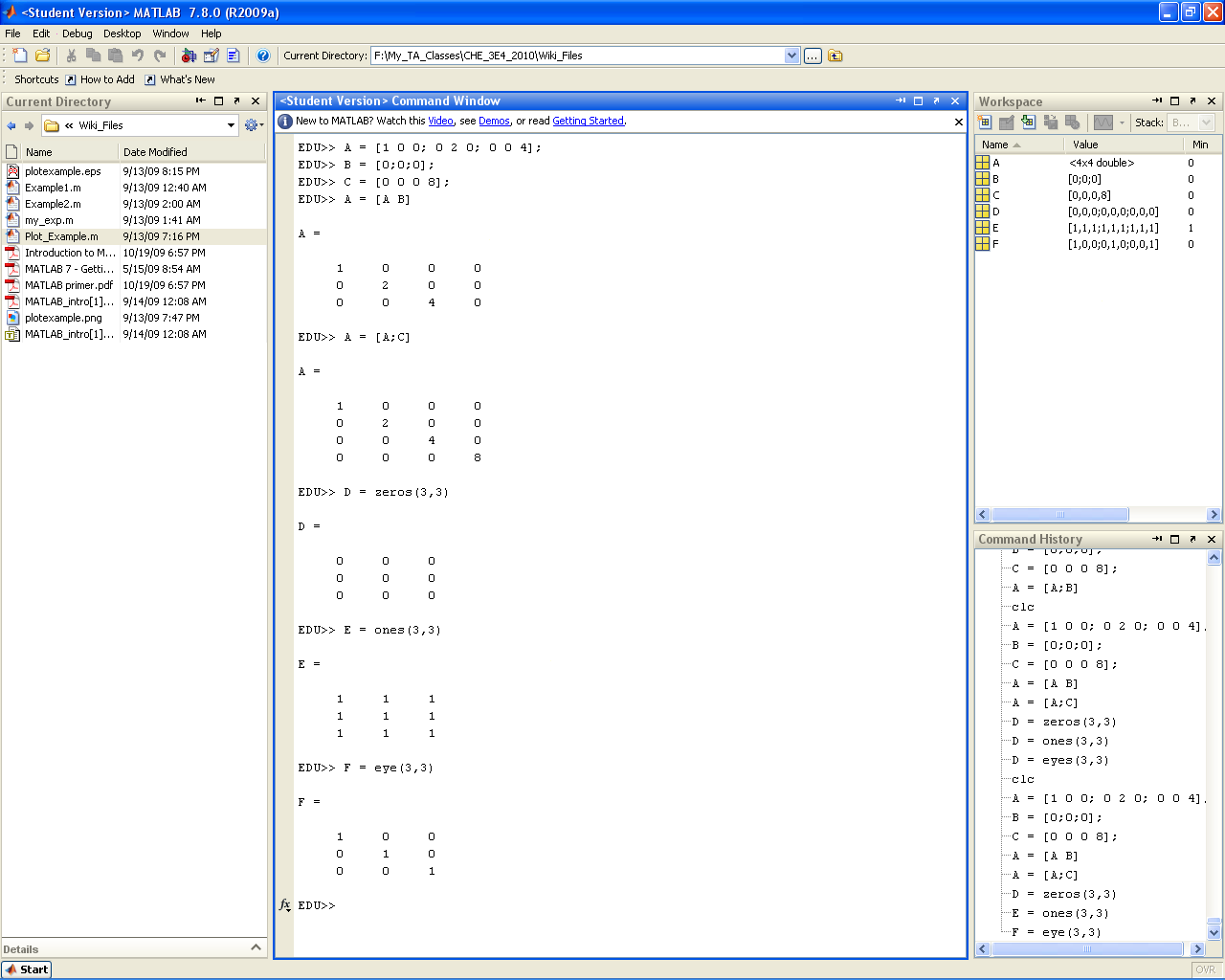From Process Model Formulation and Solution: 3E4
Jump to navigation
Jump to search
|
|
| Line 86: |
Line 86: |
|
| |
|
| =====Matrices===== | | =====Matrices===== |
| Matrices are arrays of values. To declare a matrix in MATLAB all one needs to do is use the "[]" matrix declaration brackets. Within a matrix declaration, the individual row elements are separated by a "," or a blank space (" ") and the rows are separated by a semicolon (thus it is possible to declare a matrix as it would appear on paper). Note that matrices in MATLAB are declared in row dominant order (similar to C++). That is the first index refers to the row number, the second to the column number, etc. | | Matrices are arrays of values. To declare a matrix in MATLAB all one needs to do is use the "[]" matrix declaration brackets. Within a matrix declaration, the individual row elements are separated by a "," or a blank space (" ") and the rows are separated by a semicolon (thus it is possible to declare a matrix as it would appear on paper...). Note that matrices in MATLAB are declared in row dominant order (similar to C++). That is the first index refers to the row number, the second to the column number, etc. The '''Submatrix''' section below will outline how to access elements within a matrix. Also note that it is possible to create special types of "ordered" matrices using the colon (:) operator (shown in the "Colon" section). |
| [[File:MATLAB_Matrices.PNG|center|400px]] | | [[File:MATLAB_Matrices.PNG|center|400px]] |
|
| |
|
Revision as of 12:27, 13 September 2010
Introduction to the Command Line
MATLAB
- MATLAB IS CASE SENSITIVE!!! For example, A is not the same thing as a. This is very important when working with variable and function names.
Common Command Line Commands and Functions
doc function_name
Brings up information on any built-in MATLAB function (i.e. it accesses the help directory entry).
edit
Opens the text editor
clc
Clears the screen
clear
Clears the variables from the workspace (and from memory)
Built in Functions
MATLAB has an array of simple built in functions. Basically all of the rudimentary calculation types that you can think of (sin,cos,exp,etc.) have a built in MATLAB function that may be called at the command line and coded into a script or function file (as the need arises). A few examples are shown in the screenshot below.
Built in Constants
MATLAB also has predefined variables for fundamental constants (ex. pi, Inf, i). Be wary though, as these can be easily overwritten by the user. As a rule of thumb try not to name your variables after any fundamental mathematical constant.
fprintf() and disp()
fprintf() and disp() provide a means of printing text to the command window. While obviously not useful at the command line (as the example below shows), these statements will become useful when you begin writing your own scripts and functions (either as a means of displaying intermediate results or as a means of tracking down bugs). disp() is a simple display function that prints arrays or strings directly to the command window. fprintf() is a more robust function that allows formatting of the string to be printed as well as output specification (for use in printing to files). The default output is set to the command window.
Semicolon
Placing a semicolon at the end of a line of code will suppress any output produced by that line. This (along with fprintf() and break points) can help in debugging code. Unless you are debugging it is good practice to end all lines of code with a semi-colon to avoid a bunch of garbage intermediate values being printed out at the command line.
Variables
Variables declared in MATLAB are essentially 1x1 matrices. To declare a variable in MATLAB all you need to do is specify the name of the variable and then set it to a value using the "=" operator (shown below). This is the same for both MATLAB code and the command line. Note below that if you place a semi-colon after the variable declaration then the variable's value is not reprinted (the opposite is also true). Also note that if a variable is not declared for a value then the default ans variable is assigned to it. Please note that there is only one ans variable. So as soon as another undeclared value shows up the previous value will be lost. Therefore it is always a good idea to give every variable a name (to avoid plenty of headaches in the debugging stage). Also note that ans does not discriminate between variables and larger matrices, so any new undeclared variable or matrix will reassign the value of ans.
Matrices
Matrices are arrays of values. To declare a matrix in MATLAB all one needs to do is use the "[]" matrix declaration brackets. Within a matrix declaration, the individual row elements are separated by a "," or a blank space (" ") and the rows are separated by a semicolon (thus it is possible to declare a matrix as it would appear on paper...). Note that matrices in MATLAB are declared in row dominant order (similar to C++). That is the first index refers to the row number, the second to the column number, etc. The Submatrix section below will outline how to access elements within a matrix. Also note that it is possible to create special types of "ordered" matrices using the colon (:) operator (shown in the "Colon" section).
Matrix Operations
Dot and Colon Operator
Accessing Submatrices
Concatenation
|
|
|
Scripts and Functions
Code Structures
Plotting Data
Additional Resources

